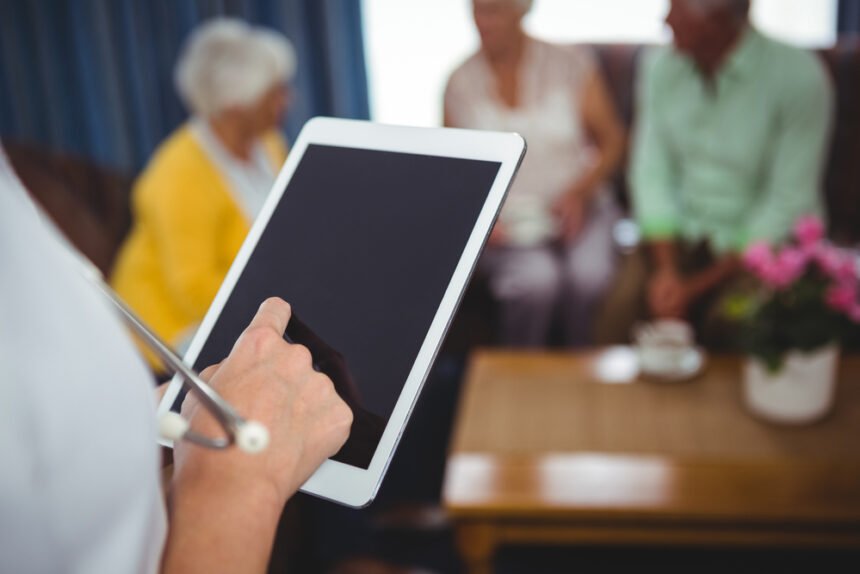For many years, nursing homes have been nearly synonymous with aging, and became the home for seniors who couldn’t live independently anymore or didn’t have family to care for them. Recent advances in both technology and medical techniques can help seniors live independently for much longer than ever before. These advances could, in turn, have a negative impact on senior living business and the nursing home industry as a whole.
What types of aging technology are becoming popular, and how could they affect your business into the future?
Multigenerational Housing
Nursing homes and senior living in general have become synonymous with people who have reached their twilight years. The trend toward multigenerational housing might change that. As its name suggests, this kind of housing is specially designed to cater to both the elderly and to younger individuals or families. Putting these drastically different age groups together can help seniors, who might be limited in their mobility, to live more independently — primarily because they’ve always got a door they can knock on or a neighbor they can call for help.
Some areas are taking it even further — college students in Cleveland can live rent-free in retirement centers like Judson Manor, allowing them to interact with and help the senior residents while helping reduce the costs of college boarding. These relationships aren’t just beneficial to the students — studies show interacting with younger people on a regular basis can help improve overall health, fight dementia and even regulate blood pressure in senior patients.
Assistance Devices
The stigma surrounding connected devices, especially monitoring devices for seniors and other at-risk individuals, is starting to fade — making it easier for busy adult children to monitor their elderly parents’ activities.
Things like MedMinder, a digital seven-day pillbox that it stays locked until it’s time to take the medication and records when the patient opens the box and takes a dose, can give piece of mind to adult children whose parents take multiple medications every day, but might not always remember to take them, or might inadvertently take too many.
Family Guardian is a program that incorporates monitors and sensors into the home of the elderly parent or patient, allowing their child or caregiver to help keep track of their activities and receive alerts in the event of an emergency or out-of-character behavior on any mobile device. It also supports an emergency help button that allows the senior to call for help at any time.
These devices can provide peace of mind for children and caregivers who aren’t with their elderly parents or patients 24/7, while allowing the seniors to live more independently.
Co-Housing for Seniors
As people age, it can be harder to get around, which can lead to social isolation and loneliness — and this is a problem for seniors. Studies have found that social isolation can create or exacerbate medical problems and lead to other conditions like smoking, obesity or lack of activity, which in turn increases the individual’s risk of death considerably.
Co-housing is designed to create a senior commune of sorts that allows each resident to live independently, but also provides communal spaces such as gardens and recreational facilities where the residents can interact and socialize. Some of these co-housing facilities even offer shared housekeeping and meals, which residents usually pay for separately through monthly dues.
While not ideal for patients who may be suffering from dementia, these co-living communities have gained popularity in the past decade and are continuing to grow as the baby boomer generation starts to reach retirement age.
Telemedicine for Non-Mobile Seniors
While not directly related to the aging-in-place movement, telemedicine is another tool that is enabling seniors, especially those with limited mobility, to remain at home and independent as they age. Telemedicine, or remote doctors’ appointments, allow seniors to meet with their doctors without ever leaving the comfort of their own homes.
Telemedicine isn’t a replacement for in-office visits, but for routine checkups and appointments, it can be an excellent alternative — seniors can check in with their doctor, discuss medication changes and even schedule upcoming appointments from their home. When paired with in-home care, these appointments could even be used for screenings such as blood work by sending a nurse to the home to draw blood for labs before the electronic appointment is even scheduled.
A telemedicine appointment can’t handle every health issue, but for routine check-ins, there’s almost no reason to even go to the office anymore. For a senior who can’t drive, or who lives in an area where taxis or ride-sharing services are rare, telemedicine can be an invaluable tool.
Health Care Boom
What does the trend of aging in place mean for senior living businesses? While it could have a detrimental effect on nursing home populations, analysts expect the home care industry to continue to thrive. The Bureau of Labor Statistics has predicted that home health care-related careers will grow dramatically over the next decade, experiencing an overall growth of up to 40 percent.
For senior living businesses that primarily focus on nursing homes and other assisted living facilities, this is the time to start transitioning to a home-care-focused business model, or at least incorporating some home-care services into your existing model. Businesses that start now have the chance to get in on the ground floor before the industry really starts to expand.
This isn’t to say that nursing homes and assisted-living facilities are going to become a thing of the past — these facilities will always be necessary for individuals who can’t, for whatever reason, live on their own. The thing to take away from the statistics is that the aging-in-place movement is going to continue to grow as more independent adults move into their golden years.

